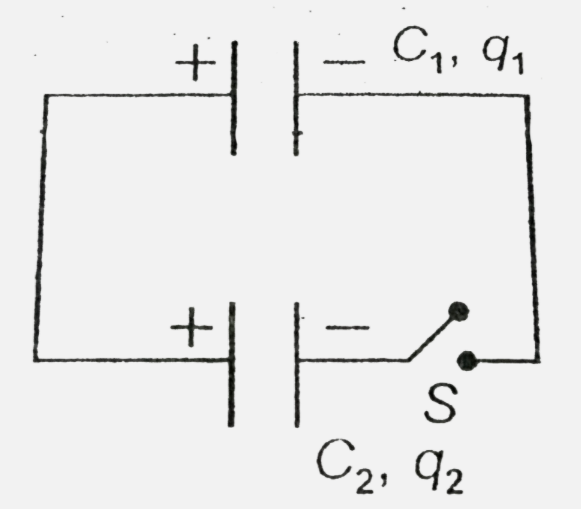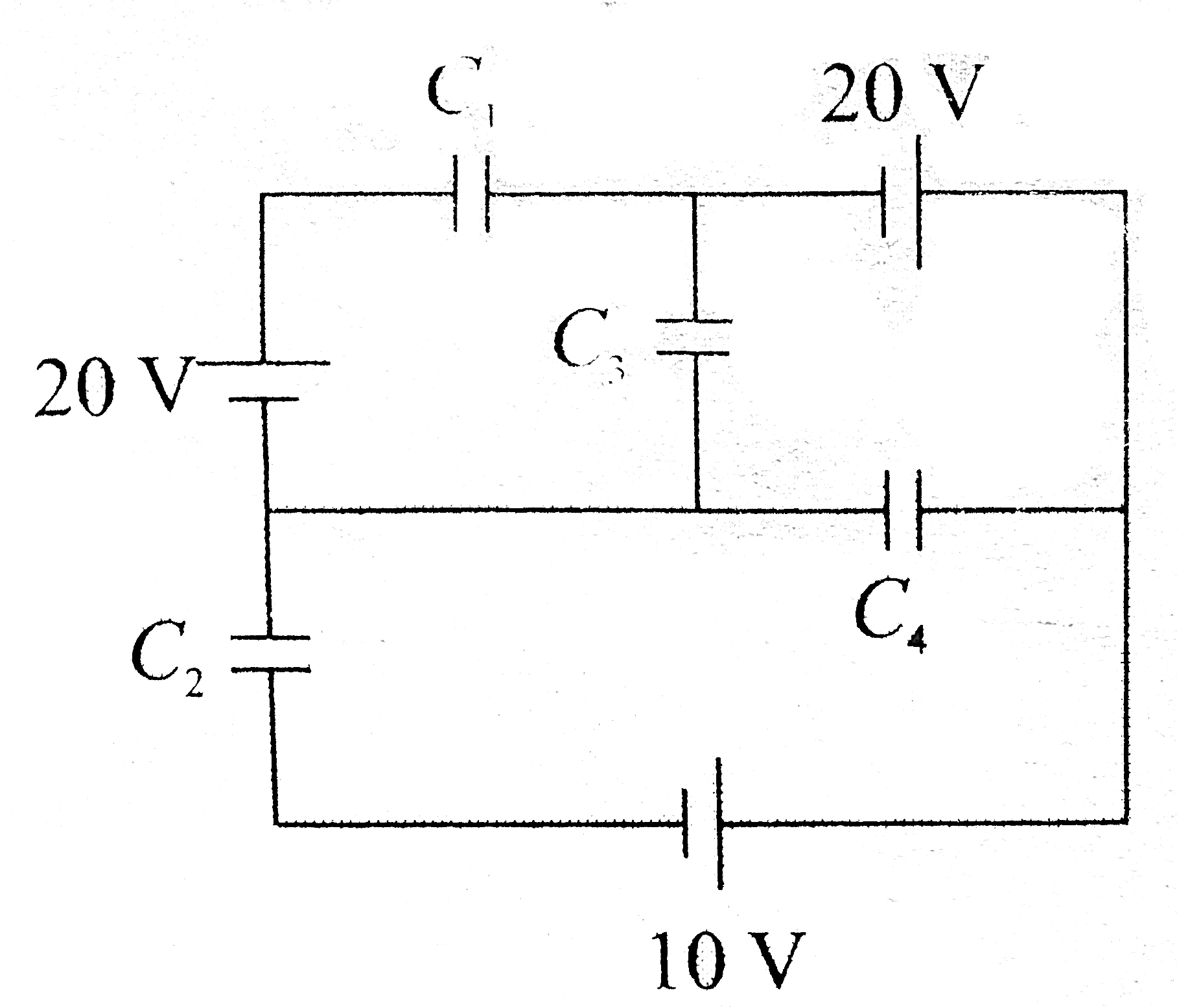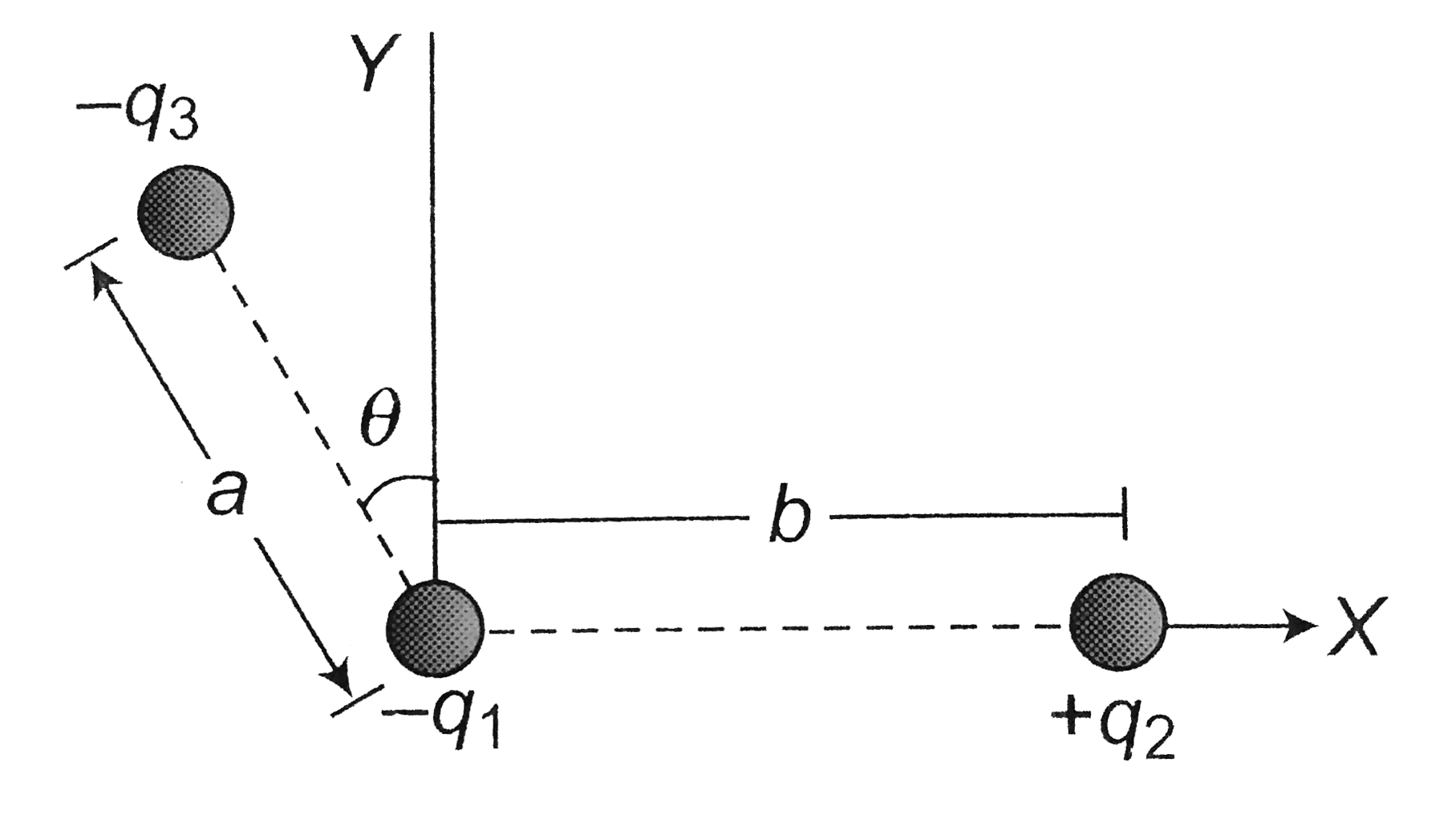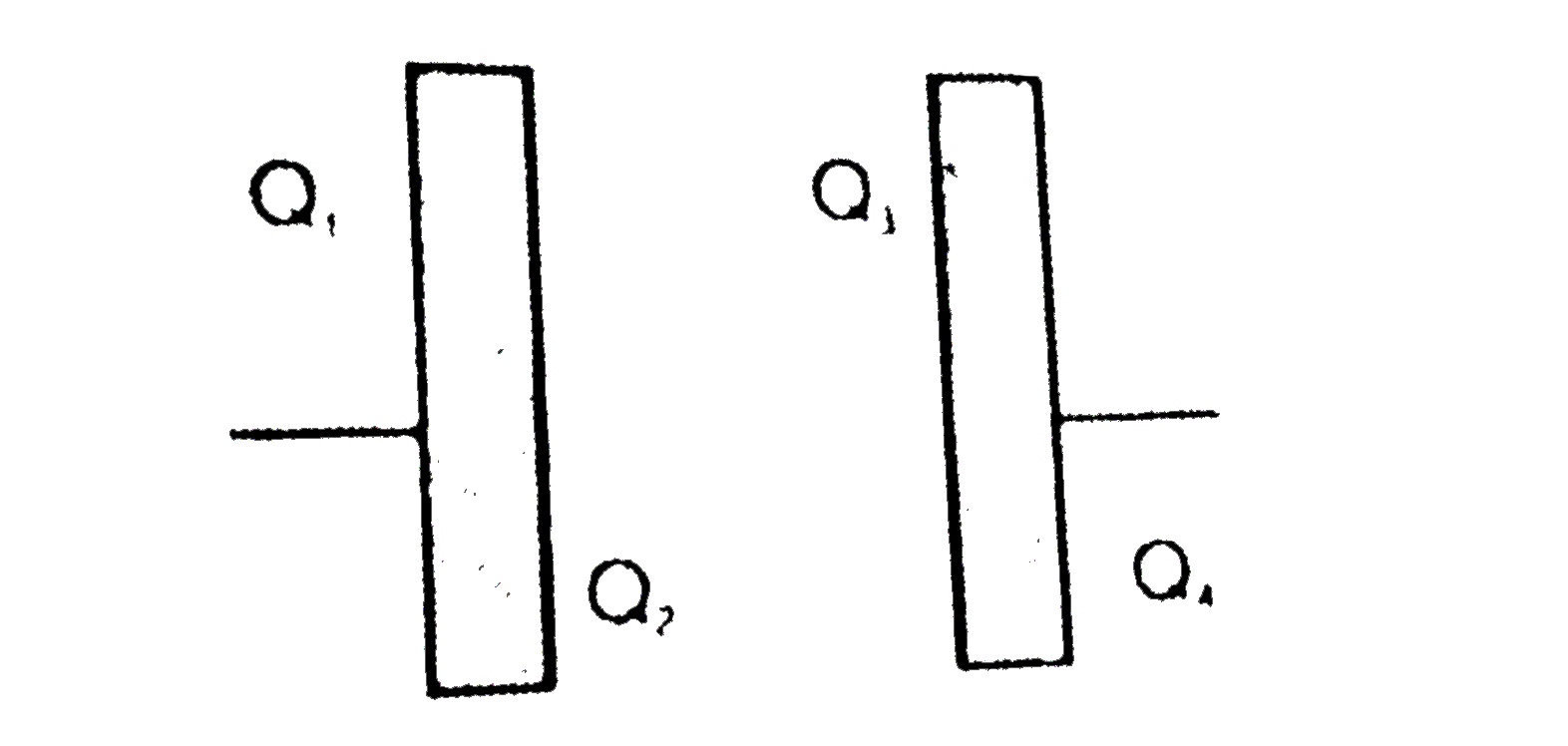Charges q1 , q2 and q3 are placed on capacitors of capacitance C1, C2 and C3, respectively, arranged in series as shown. Switch S is there closed. What are the final charges q'1, q'2 and q'3 on the capacitors?
Given q1=30μC, q2=μC, q3=10μC, C1=10μF, C2=20μF, C3=30μF and ε=12volt

Applying Kirchoff's law on the loop,
q1'C1+q2'C2+q3'C3=ε.........(1)
Net charge on plates 2 and 3 will remain conserved.
∴−q1'+q2'=−q1+q2 ...........(2)
Also, net charge on plates 4 and 5 will remain conserved.
∴−q2'+q3'=−q2+q3 ..........(3)
Using Eqs. (1), (2) and (3) and putting the values, we get
q1'=79011μC, q2'=68011μC, q3'=57011μC.

Similar Questions
When switch S is thrown to the left in figure, the plates of capacitor 1 acquire a potential difference V0. Capacitors 2 and 3 are initially uncharged. The switch is now thrown to the right. What are the final charges q1,q2 and q3 on the capacitors?

View SolutionThe plates of a capacitor of capacitance C are given the charges Q1andQ2 as shown in figure. Now the switch is closed at t =0. Find the charges on plates after time t.

View SolutionIn figure, the charges on C1,C2, and C3, are Q1,Q2, and Q3, respectively.
 .
.
View SolutionThe circuit shows two capacitors, C1 and C2 charged so as to have respectively charges q1 and q2 . The switch is closed . Which of the following choices are incorrect ?

View SolutionThree point charge q1=1μC,q2=−2μC and q3=3μC are placed at (1m,0,0),(0,2m,0) and (0,0,3m) respectively. Find the electric potential at as origin.
View SolutionA capacitor of capacity C having charge q and 3q, on the plate P1 and P2 respectively as shoen in figure. Now switch 'S' is closed, find the work done by the battery. (take q=CV )

View SolutionFour capacitors C1=8μF,
C2=2μf,C3=6μF, and C4=6,μF are arranged as shown in. Find the charge on all the capacitors in the circuit.
 .
.
View SolutionThree charges −q1,+q2 and −q3 are placed as shown in the figure. The x-component of the force on −q1 is proportional to

View SolutionName the process shown in the figure.

View SolutionIn an isolated parallel plate capacitor of capacitance C the four surfaces have charges Q1,Q2,Q3 and Q4 as shown in the figure. The potential difference between the plates is :

View Solution
